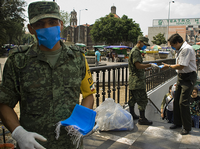Thanks to the assets and strategy developed during the past decade, the United States has thus far effectively managed the swine flu (H1N1) threat. The resources, plans, and authority now at the federal government's disposal have enabled it to respond to a major health crisis that caused more serious problems in other countries. The Bush administration left a robust toolkit for the Obama team, which for its part has used it well. Cooperation among federal, state, local, private, and other important actors has been effective in distributing public face masks, implementing mass inoculation campaigns, and taking other timely responses.
At present, the government and the nation's scientists are in a race to see whether they can mass-produce and distribute a safe and effective vaccine for the H1N1 influenza virus before the flu season starts in the northern hemisphere this fall. And we have a good chance of winning.
The effective response to H1N1 influenza suggests that the United States also has strong assets for dealing with a domestic bioterroism incident. Unfortunately, under certain conditions, the deliberate use of a dangerous biological agent as a weapon could represent a much more severe threat than swine flu, which in itself is not as serious an influenza threat as several previous disease outbreaks. In particular, H1N1 has a lower lethality rate than other biological agents.

